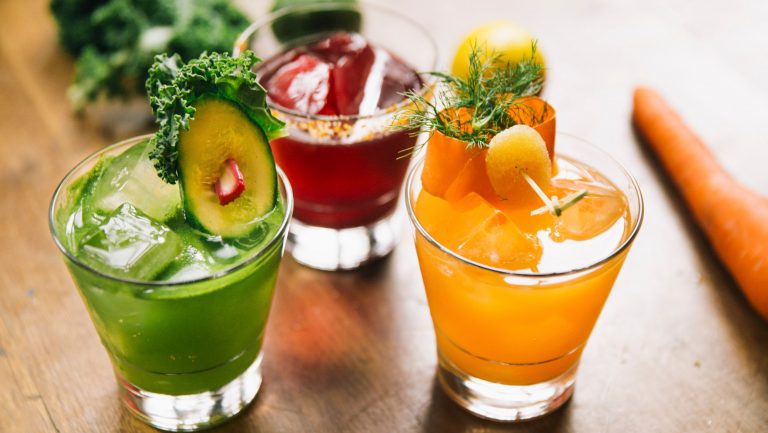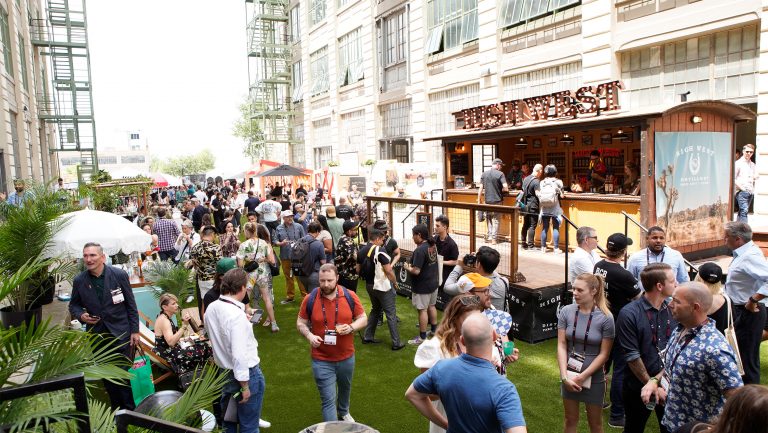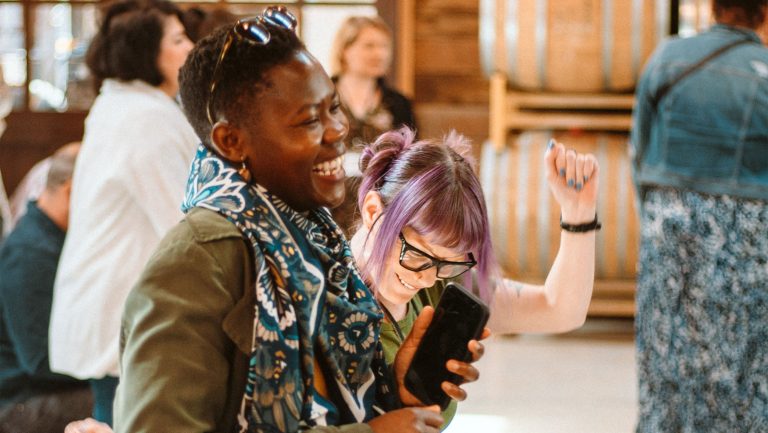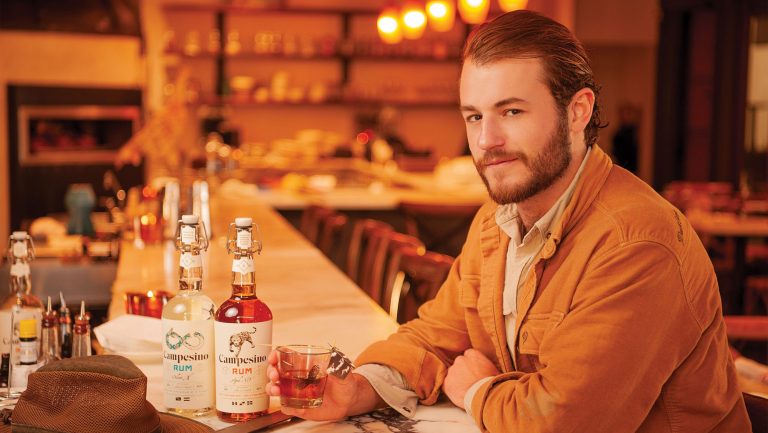Only a few years ago, non-alcoholic beverage options at fine-dining establishments and craft cocktail bars were limited to club and regular sodas or some hastily mixed concoction a bartender made on the fly. As the general public and the industry have become more health conscious, those choosing to abstain from alcohol are creating a demand for higher-quality choices.
At the annual Tales of the Cocktail trade conference last week in New Orleans, Frank Lampen, the chief tasting officer of Distill Ventures, a spirits investment firm based in the U.K., moderated a panel on present and future trends in non-alcoholic drinks that featured Eben Freeman, a principal consultant at the bar Cocktail Culinaria in New York City; Julia Momose, the beverage curator of Chicago’s Oriole; and Aaron Polsky, the bar manager at Harvard & Stone in Los Angeles and a brand ambassador for Seedlip, a non-alcoholic-spirits producer.
The Market for Non-Alcoholic Beverages
According to Lampen, trend data from the British Institute of Alcohol show that the frequency of imbibing is on the decline in the United Kingdom. In addition, he says, AB InBev predicts that non-alcoholic and low-alcoholic beers will make up 20 percent of all beer sales by 2025. Freeman points to emerging markets, such as the Middle East and China, where “people want the trappings of a cocktail bar but don’t drink for religious or philosophical reasons” as a further sign of increasing demand for non-alcoholic beverages.

Don’t miss the latest drinks industry news and insights. Sign up for our award-winning newsletters and get insider intel, resources, and trends delivered to your inbox every week.
For Momose and Polsky, offering such drinks is simply good hospitality. “When people who don’t drink come into our bar and see interesting options,” says Polsky, “they think, ‘Wow, they really thought about me.’” He has observed that the trend is more likely to be embraced by people who prioritize wellness, by high-end restaurants and bars, and by establishments already catering to those with dietary restrictions, such as vegetarians.
Naming the Category
Whether non-alcoholic spirits are listed on a menu or not, there’s still a question about what to call them. Seedlip refers to itself as a “non-alcoholic distilled spirit,” but as Freeman asks, “How do you shout that across a bar five deep?”
Momose eschews the word mocktail—which she says implies, at best, something half done, and at worst, something to be mocked—in favor of “spirit free,” a term that was inspired by a non-alcoholic beer in her native Japan whose name translates as “all-free.”
“‘Spirit free’ feels exciting and empowering,” says Momose. “It’s not zero, without, or lacking. I try not to compare my drinks to alcoholic ones—I just say this is a refreshing, bitter, tart, or effervescent and thought-provoking drink. It can stand alone.”
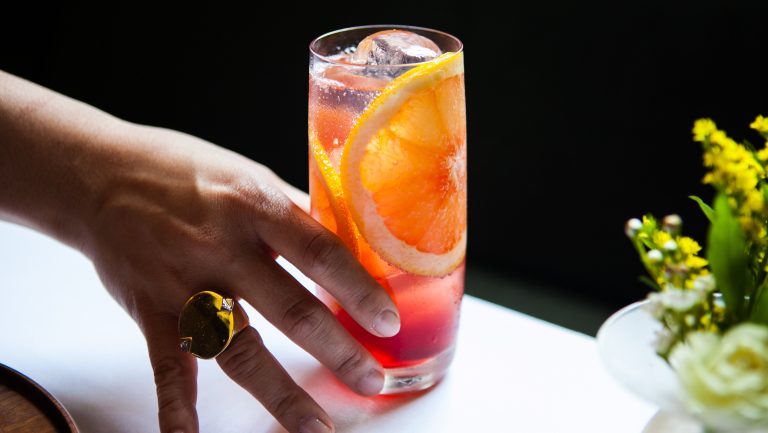
Navigating Pricing Challenges
“Seedlip is more expensive than some people’s well bourbon,” Freeman points out. “How do you justify that cost to your guests?”
Momose says it’s not an issue at Oriole, where the non-alcoholic pairings are priced the same as alcoholic drinks. “People who are looking for a beautiful spirit-free drink are expecting similar prices as [those for] cocktails,” she says, noting that at Oriole about 5 to 10 diners of 30 to 40 covers typically choose a non-alcoholic option.
Polsky admits that at Harvard & Stone, “a good-times bar with live music, burlesque, and people ordering rip shots,” the non-alcoholic drinks are priced lower “just to avoid the conversation.”
Freeman, the panel’s self-described “contrary voice,” says, however, “If people were cranky about paying $5 for a Coca-Cola with a $500 tasting menu at Eleven Madison Park, what normal person is going to pay $15 for something without alcohol?”
Many bar and restaurant guests may resist such high prices, but operators in some on-premise venues are managing to carve a niche with their creative non-alcoholic beverage offerings.
What’s Next?
While Freeman acknowledges that the current offerings are a vast improvement over old-school non-alcoholic drinks, which “eliminated booze, doubled the acid and sugar, and created a flavorful yet heartburn-inducing gut buster,” all the panelists agreed there is a need for more varied non-alcoholic products, especially modifiers and bitters.
Momose, who makes her drinks from scratch, says she could eliminate “hours of prep” if the right components were available. “So many of the current products taste like plastic or Smarties,” she says. “We need more finesse from products.”
Freeman concurs, saying, “A lot of options taste like potpourri. Imagine drinking that before a tasting menu—it will knock your palate out! We need more [non-alcoholic] beverages that can speak on their own. Simplicity, something easy. I don’t need to make a Ramos gin fizz out of it.”
Polsky hopes that as demand grows, so will choices for nonimbibers. “I think we should recognize that some people aren’t drinking, maybe not for some moral reason but just because it’s lunch,” he says, “and give them options and include them on all menus.”
For Momose, it all comes back to hospitality. “I think we’re moving forward, in a direction where people will open a menu and know there’s a place for them at the bar,” she says. “They don’t have to worry about a bartender going out of their way to make something from scratch for them in the moment. Hospitality should extend to people who are drinking and those who are not.”

Dispatch
Sign up for our award-winning newsletter
Don’t miss the latest drinks industry news and insights—delivered to your inbox every week.
Laura Scholz, a writer and editor based in Atlanta, has covered food, spirits, wellness, and travel for the Atlanta-Journal Constitution, the Atlantan, Eater Atlanta, Liquor.com, Tales of the Cocktail, VinePair, and other publications. She is currently the fitness editor of Atlanta magazine. Follow her on Instagram @lbscholz.

